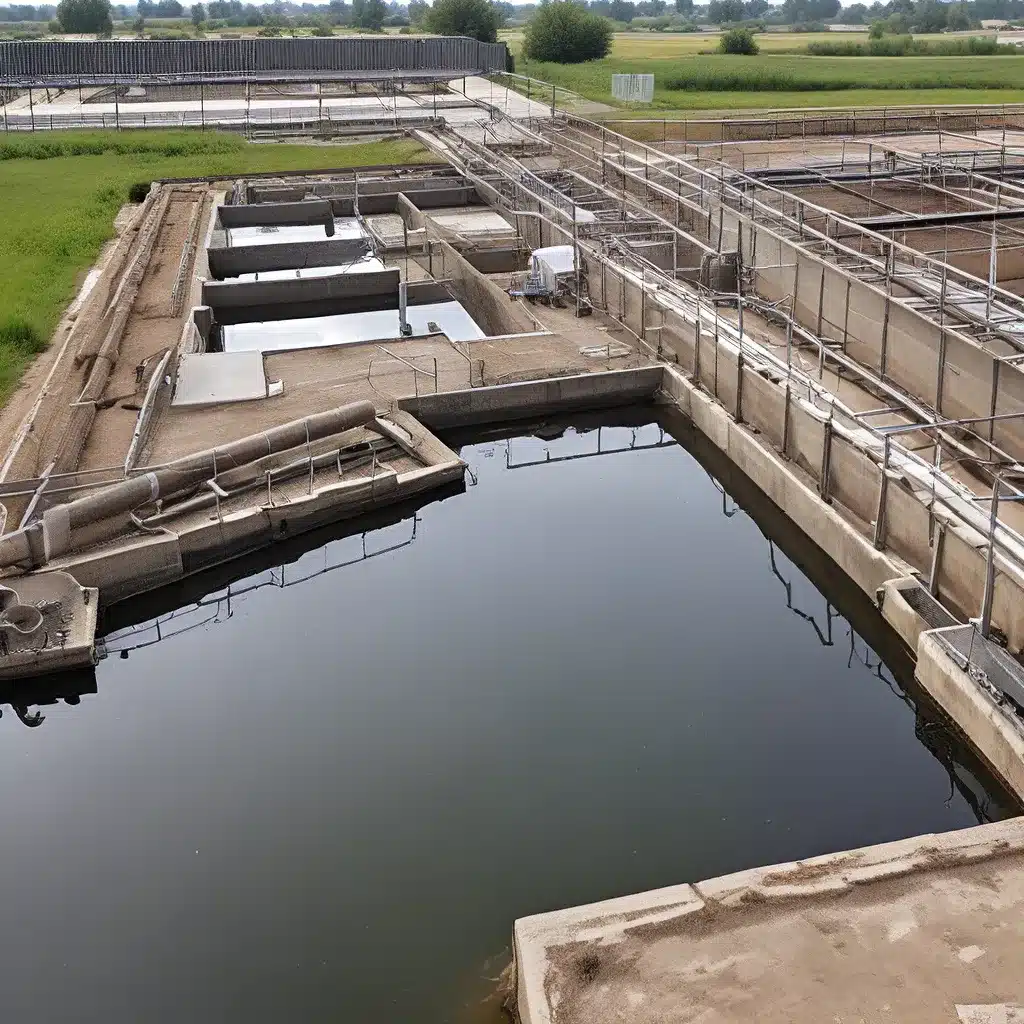
Diving into the Future of Water Purification
Ah, the fascinating world of wastewater treatment technologies! It’s like exploring the hidden depths of the ocean – you never know what incredible innovations you might stumble upon. As someone deeply passionate about environmental sustainability, I’ve been keeping a close eye on the rapidly evolving landscape of water purification. And let me tell you, the future is looking brighter (and cleaner!) than ever before.
Recent industry reports suggest that the global water and wastewater treatment technologies market is on the cusp of a major transformation. Driven by factors like population growth, industrialization, and the urgent need to address environmental concerns, the market is expected to grow from a staggering $6.146 billion in 2023 to a whopping $8.528 billion by 2028. That’s a CAGR (Compound Annual Growth Rate) of 6.77% – a clear indication that the world is thirsty for innovative solutions to our water challenges.
Tackling Emerging Contaminants
One of the most fascinating developments in the wastewater treatment arena is the industry’s response to the rise of emerging contaminants. These are substances that were previously undetected or considered harmless, but are now recognized as potential threats to human health and the environment. Think of things like microplastics, pharmaceuticals, and personal care products – they’ve become ubiquitous in our water sources, and traditional treatment methods often struggle to remove them effectively.
But fear not, my fellow water enthusiasts! The brightest minds in the industry are rising to the challenge, exploring cutting-edge technologies that can tackle these pesky pollutants. From advanced oxidation processes to innovative membrane filtration systems, the options are as diverse as they are fascinating.
Researchers are experimenting with things like ozonation, UV light, and powerful oxidants to break down complex organic compounds, while membrane-based technologies are becoming increasingly efficient at separating even the smallest of particles. And let’s not forget about the power of biotechnology – microorganisms are being enlisted to metabolize and remove certain contaminants, offering a more natural and sustainable solution.
Embracing Sustainability and Energy Efficiency
But wait, there’s more! The water and wastewater treatment industry is also laser-focused on sustainability and energy efficiency. After all, what’s the point of cleaning up our water if we’re just going to guzzle up a ton of energy in the process? That’s why innovative technologies like anaerobic digestion, combined heat and power systems, and renewable energy integration are gaining traction.
Imagine a future where wastewater treatment plants not only clean our water, but also generate their own power from the very waste they’re processing. The University of Arizona’s Water and Energy Sustainable Technology (WEST) Center is at the forefront of this movement, exploring ways to transform water treatment facilities into self-sustaining hubs of renewable energy production.
Adapting to Global Challenges
Of course, the challenges facing the water and wastewater treatment industry aren’t limited to just emerging contaminants and energy efficiency. The industry must also contend with a host of global issues, from population growth and urbanization to climate change and resource scarcity.
As the world’s population continues to swell, the demand for clean water is skyrocketing. And with more people living in cities, the volume of wastewater generated is reaching unprecedented levels. Couple that with the unpredictable weather patterns and water shortages caused by climate change, and you’ve got a perfect storm of water-related challenges.
But the industry is rising to the occasion, developing innovative solutions that can help communities adapt to these global pressures. From decentralized treatment systems that bring water purification closer to the source, to advanced desalination technologies that can turn seawater or brackish water into a reliable freshwater supply, the options are as diverse as they are ingenious.
The Human Element in Water Treatment
Of course, it’s not just the technology that’s evolving in the water and wastewater treatment industry. The human element is also playing a crucial role in shaping the future of this vital field.
As environmental regulations become more stringent and public awareness of water issues grows, water utilities and treatment providers are under increasing pressure to deliver safe, sustainable, and cost-effective solutions. This, in turn, is driving a greater emphasis on innovative thinking, cross-disciplinary collaboration, and public-private partnerships.
The days of the lone engineer tinkering away in a lab are long gone. Today, the most successful water treatment companies are those that can bring together a diverse team of experts – from scientists and engineers to policymakers and community leaders. By fostering this kind of collaborative approach, they’re able to develop tailored solutions that address the unique needs and challenges of each community they serve.
A Cleaner, Brighter Future Awaits
As I reflect on the incredible advancements in wastewater treatment technologies, I can’t help but feel a sense of excitement and optimism for the future. The water and wastewater industry is truly at the forefront of environmental innovation, driven by the urgent need to protect our most precious resource.
Whether it’s tackling emerging contaminants, embracing sustainability, or adapting to global challenges, the industry is constantly pushing the boundaries of what’s possible. And with the continued efforts of dedicated researchers, engineers, and water enthusiasts like myself, I have no doubt that we’ll see even more remarkable breakthroughs in the years to come.
So, my friends, let’s raise a glass (of purified water, of course!) to the innovators and dreamers who are shaping the future of water treatment. The path ahead may not be easy, but with the right technologies and the right mindset, I believe we can create a cleaner, brighter future for all. After all, as the folks at Inland Waters like to say, “When it comes to water, there’s no such thing as ‘good enough’ – only ‘better.'”


